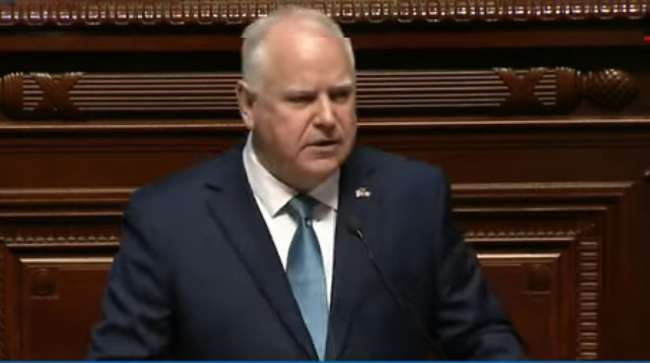Staff Reporter
Minnesota Governor Extends Driving Hours for Fuel Transportation

[Stay on top of transportation news: Get TTNews in your inbox.]
With lower fuel inventories and harvest season expected to increase demand, Minnesota’s governor extended for another month an order enabling more driving hours to transport fuel.
“Fuel terminals across the state, including those in Sauk Centre, Alexandria, Wrenshall and Roseville, are reporting shortages or outages of products, and drivers have experienced long wait times due to increased demand at terminals that do have available supply,” Gov. Tim Walz noted when issuing Emergency Executive Order 22-18. It extended an expiring July 15 mandate.
Noting that reliable access to diesel, gas and other fuels will be critical in the coming weeks and months, the order extends hours-of-service requirements for motor carriers and drivers transporting fuels in the state through Sept. 11.
As families see the price of gas fall from their record highs, we continue working to make fuel as affordable and accessible as possible for Minnesotans. https://t.co/V5K4onJRtK — Governor Tim Walz (@GovTimWalz) August 15, 2022
“Strict enforcement of certain hours-of-service regulations would prevent or hinder the efficient transportation of these essential supplies. Continued relief is necessary to allow for the movement of these commodities, as carriers and drivers continue to provide time-sensitive assistance,” the order states, adding that it does not allow or require a tired/ill driver to operate a commercial motor vehicle.
Any driver needing immediate rest, and who informs a carrier, must be given at least 10 consecutive hours off duty before returning to drive.

Siamak Azmoudeh of SkyBitz discusses the rise of the smart trailer and why the industry standard is shifting toward more sensors, more data and more business intelligence. He joins host Seth Clevenger to explain the evolution of trailer telematics. Tune in above or by going to RoadSigns.ttnews.com.
“We are nearing the end of the summer travel season and look ahead to the harvest season, when farmers will rely heavily on gasoline, diesel and other fuels to complete their work,” Walz added.
He said prices for gasoline and diesel have fallen recently, but increasing demand is causing fuel suppliers and transporters to struggle to meet needs.
“Our state has faced additional supply constraints and logistical challenges due to the ongoing closure of a refinery in Superior, Wis., as well as the temporary closure of a refinery in St. Paul Park,” Walz said. “Minnesota petroleum providers continue to report that the shortage of qualified truck drivers is inhibiting efficient transportation of products from refineries to fuel terminals, and ultimately to local businesses and retail sites.”
Minnesota’s Department of Commerce reports indicate that most fuel inventories are at lower levels than last year and even three-year averages.
Because Minnesota has requirements for renewable fuels, it tracks state inventories of biodiesel, No. 1 distillate (a light petroleum fuel that can be as diesel or a fuel oil), middle distillate (for use as diesel or jet fuel), gasoline and fuel ethanol. It mandates that all diesel fuel contain biodiesel.
Want more news? Listen to today's daily briefing above or go here for more info
From May to June, the state Commerce Department issued seven waivers on blended fuel requirements due to biodiesel outages at Flint Hills Resources fueling terminals in Roseville, Wrenshall and Rosemount, Minn., as well as the Magellan terminal in Fargo, N.D., since there was no biodiesel available for loading at racks to transport to retailers.
The latest available statistics indicate that as of Aug. 5, state inventories for most fuels tumbled below three-year averages. No. 1 distillate supplies dropped 50% over three years to 129,100 barrels, while middle distillate fell 32% to 1.37 million barrels, ethanol fuel slipped 11% to 102,000 barrels and gas stood at 3.5% less with 1.78 million barrels. Only biodiesel moved the needle 12% above the three-year average to 44,000 barrels despite this year’s continuous volatile lows.




